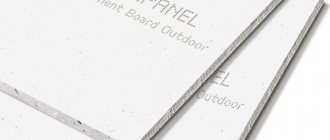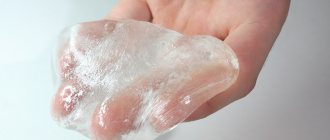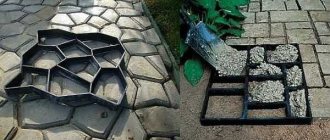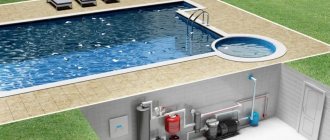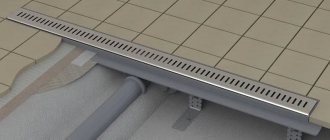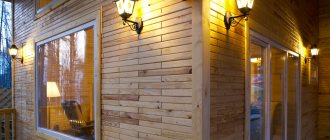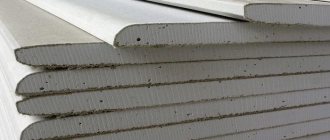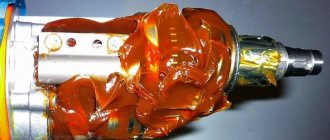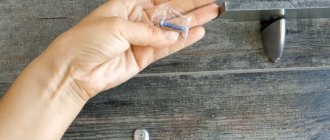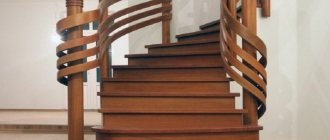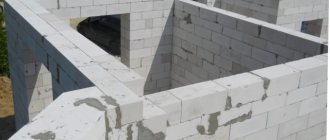To obtain a durable floor covering, it is necessary to prepare a high-quality base, which is most often a concrete screed. To ensure the strength of the screed, you need to use reinforcement, but not everyone can afford to lay expensive metal reinforcement.
Thanks to the development of technologies for the production of building materials, an original and effective replacement for metal mesh for reinforcing concrete foundations has emerged - light and cheap fiber fiber. Now, to organize a solid base for the finishing coating, you can use a fiber cement floor screed, the technology of which is simple and accessible to any home craftsman.
Fiber fiber is produced in the form of thin (approximately 20 microns in thickness, 6 to 20 mm long) rods made of various materials: polypropylene, metal, fiberglass and basalt. Reinforcing fibers are used not only to organize screeds, but also to strengthen plaster mixtures, to give greater strength to concrete products, and to tighten fractions in the road surface.
By following the technology for preparing cement-sand mortar with fiber, a material is obtained in which the binding fibers are evenly and multidirectionally distributed throughout the entire volume, which makes it possible to obtain unique strength characteristics of the finished product.
The different fiber lengths are determined by the purpose of the concrete mixture. So, for brickwork, 6 mm long fiber is added to the mortar, for pouring screed - 12 mm, and for concrete mortars intended for use in difficult conditions, fiber up to 20 mm long is used.
Advantages of fiber windows
The main task of fiberglass is to strengthen the screed. Without reinforcement, it is not so strong and rigid in bending. Plus, the addition of fiber greatly reduces the risk of cracking of the rough layer on the floor during hardening and shrinkage after pouring. As the gypsum and cement-sand mortar hardens, water comes out in small quantities. If the floor screed is poured in a thick layer and not reinforced, it will become covered with small cracks, which will then inevitably begin to expand and destroy the coating.
Distribution of fiber in screed solution
The use of fiberglass allows you to:
- avoid separation of the setting mortar;
- prevent microcracks from appearing in it;
- increase the strength of the coating against fracture and point loads several times;
- reduce the amount of water used and minimize the formation of voids inside the concrete;
- reduce the hardening time of the mixture by 2–3 times;
- improve the frost resistance of the screed by 7–10 times;
- increase the abrasion resistance of the base under the finish by 30–40%.
Hardened cement screed with fiber
With proper use of fiber, the strength characteristics of the floor screed increase by 3–5 times. Very little reinforcing material is consumed. And the markup he gives is no more than a couple of percent of the cost of the prepared solution. At the same time, the main competitor of fiberglass, metal mesh, will cost almost an order of magnitude more. And working with the latter is much more difficult than with fine fiber added to the kneading composition.
Advantages of fiber screeds
What is it and why is it needed
Fiber fiber, or simply fiber, is a reinforcing additive in various building mixtures and solutions. By adopting a chaotic arrangement inside the concrete, it improves its quality characteristics, such as abrasion, strength, etc. In addition, fiber-fiber concrete better resists bending and tensile loads. All this is very important for floor screed.
Fiber is very strong thin fibers ranging from 6 mm to 20 mm in length. The size of reinforcing additives affects the characteristics of concrete differently, so the following is used:
- 6 mm - in mortars for cladding and masonry;
- 12 mm - screeds and various monolithic concrete products;
- 18-20 mm - in structures operated in extreme conditions, for example, dams.
It is produced in the form of crumbly material from glass, metal, basalt and polypropylene. It begins to influence the screed already at the stage of mixing the solution - it actively influences future physical and chemical processes that will begin after pouring, in two directions at once.
1. A solution with reinforcing additives requires less water to completely mix. Consequently, during the hydration process, the screed will gain strength faster, and excess moisture will not actively evaporate, forming microvoids and a network of small cracks.
Illustration of fiber distribution inside concrete.
For information: in any solution there are voids. In a traditional mixture of cement and sand, they are filled with water; in a reinforced mixture, they are filled with fibers. Therefore, you need less water up to 20%.
2. By filling all voids after pouring, fiber fiber prevents the formation of microcracks in the first 5-7 hours of setting of the solution.
For information: at the initial stage of hydration, internal stresses appear in the pouring body due to micropores and different rates of hardening, which manifests itself in a network of cracks on the surface of any concrete product. The use of reinforcing fibers allows, firstly, to fill voids and, secondly, to evenly distribute moisture inside the concrete product, as a result of which the hardening process proceeds evenly, which reduces internal stresses to zero.
At the second stage of hydration, when ordinary concrete begins to shrink and cracks appear, the fiber fibers hold the screed in its original dimensions, as a result of which cracks do not form. If they do appear, then due to the multidirectional effect of the reinforcing fibers on the concrete surface, the resulting gaps between the cement particles are tightened.
Types of fiber fiber
Fiber for floor screed is a microfiber with a thickness of 10 microns to 2 mm and a length of 3–25 mm, depending on the type. There are options with other sizes, but they are used in other areas of production and construction. For installation of poured floor coverings, it is recommended to use only material with the above parameters.
Types of fiber for screed
Fiber fiber is made from:
- become;
- basalt;
- polypropylene;
- glass
In terms of general characteristics and effects on the solution, they are all the same. But each of these varieties also has its own distinctive pros and cons.
Steel fiber
Steel fiberglass for screeds is distinguished by its heavy weight, fire resistance and increased resistance to temperature changes. It is usually used when pouring thick concrete floors in industrial and commercial facilities. Its main disadvantage is its susceptibility to rust. Even with a special brass coating and being inside concrete, steel fiber still begins to rust over time, losing its characteristics.
Basalt
The basalt analogue is also not afraid of fire and temperature changes. But the main thing is that it is not afraid of moisture and aggressive chemicals. If you need to reinforce the screed with fiberglass on the floor in a bathroom, steam room or garage, then basalt will be the most optimal choice.
Advantages of basalt fiber
Polypropylene
Polypropylene fiber for screeds is the most common now. It is distinguished by its low weight and resistance to moisture. A floor reinforced with such fiber fiber increases not only its strength but also its sound insulation characteristics. The main disadvantage of this option is its susceptibility to melting at high temperatures, which can occur even during a small fire.
Fiberglass
Glass fiber is characterized by high ductility and the lowest strength among analogues. This is more an option for plaster mixtures. But if the floor screed is made 2–3 cm thin, then it is best to choose fiberglass for its reinforcement. Here glass wins over polypropylene, basalt and steel.
When to use fiber
Fiber reinforcement is used in screeds made from a cement-sand mixture - such a solution is more susceptible to the formation of cracks. Even with the correct ratio of components and care after installation, cracks will still occur. But to have fewer of them, it is better to add micro-reinforcing substances
Please note that fiber mesh does not replace mesh. Chaotically located fragments will improve performance, but they will not be able to redistribute the load and connect the entire screed into a single system
Fiber happens:
- polypropylene;
- metal;
- basalt;
- fiberglass.
When kneading, fiber is added to the dry ingredients. When the sand and cement are mixed until smooth, add fiberglass and mix again. When the fibers are distributed evenly, you can add water.
Types of fiber in screed
Non-professional builders often have a desire to add more fiber. If it prevents the formation of cracks, then the more fiber, the fewer cracks. Isn't it logical? From a logical point of view it is possible, but from a practical point of view the opposite is true. If there is an excess of fiber, the strength of concrete decreases. So we strictly follow the recommendations, adding exactly as much as needed.
How to choose fiberglass for screed?
When choosing the material in question, you should take into account not only its price per kilogram, but also the consumption of fiber fiber of one type or another per cubic meter of solution. Steel fibers will consume the most weight, and polypropylene fibers the least. At the same time, the steel version is much cheaper than the polymer one. And fiberglass and basalt are somewhere in between.
Popular material manufacturers
If, when deciding how to choose plastic windows, you have to analyze the thermal conductivity and number of chambers of various proposals, then with fiberglass the main thing is the consumption per 1 m3 and the price per 1 kg. Moreover, these two figures must be considered together, and not separately.
Based on the combination of characteristics and final cost, in most cases it is recommended to choose polypropylene fiber. It is expensive, but is consumed in the smallest volumes per cubic meter of solution. But if you need a reinforcing material for a thin layer or one without much strength, then you should take basalt fiber at a lower price. However, a lot here depends on the required properties and thickness of the subfloor.
What is fiber for concrete or mortar?
Let's start with what fiber fiber is. This is one of the types of additives for changing the properties of concrete. Fiber - artificial fibers for concrete reinforcement. It is used as an additive during mixing and is evenly distributed throughout the entire volume. This additive reduces the number of cracks and improves bending strength - these are properties inherent in almost all fiber additives. But the specific properties depend on what material the fibers are made of.
Fiber for concrete is a fibrous additive for improving/changing the properties of the solution
Concrete with the addition of fiber is usually called fiber-reinforced concrete. There are also names that reflect the specific type of additive: basalt fiber reinforced concrete, glass fiber reinforced concrete.
Making screeds with fiber fiber
The construction of a reinforced screed using fiber fiber occurs in five stages:
- Preparing the base.
- Installation of beacons by level
- Laying damper tape.
- Mixing the solution with the addition of fiber.
- Laying out (pouring) the mixture and leveling it on the floor.
Preparation of a solution with fiber
It is recommended to add fiber fiber in two stages. Half when hanging “dry”. And half after adding water to the mixture. For fiberglass, polypropylene and basalt fiber, the recommended consumption is about 0.5–1 kg/m3. And the steel analogue will have to be added about 25–50 kg/m3.
Preparation of mortar for screed
Like the damper tape for floor screed, reinforcing fiber is not afraid of the effects of alkalis inherent in concrete. It calmly tolerates the process of dehydration that occurs during the hardening of cement-sand and gypsum mortars. There is no need to add any additives to the mixture here. It is enough to mix all the components into a homogeneous mass and then add clean water.
Cement screed with fiber
The construction of screeds with and without fiber, semi-dry and classic wet technologies differs little. The work processes are approximately the same in all cases. With the reinforcement under consideration, the main thing is to evenly mix the fibers in the solution so that they do not collect in a lump on any one area of the floor. Otherwise, everything happens according to the usual pattern.
The type of fiber fiber also does not particularly affect the procedure for mixing the solution. Thinking about how to connect a boiler to water depending on its type will require serious consideration and a careful assessment of various factors. The fiber just needs to be added to the mixture being kneaded. This ease of installation distinguishes it from its direct competitor – reinforcing mesh.
Classic reinforcement made of rods or polypropylene must not only be laid out on the floor, but also fixed at a certain height. After all, it must be inside the concrete. And the fiber fiber, after mixing all the required components, is already in the solution.
Floor installation with screed
Manufacturers
- Fiber fiber Micronix, SpektrStroy LLC, Moscow.
- Polymer", Rostov-on-Don
- Polypropylene fiber Russeal RS-12 mm, furniture St. Petersburg.
- Company: Rosfibra (wholesale sales, 11 Representative offices in Russia).
©opolax.ru
More articles
- How long does it take for floor screed to dry?
- Polystyrene concrete screed: not so simple
- Advantages of semi-dry floor screed
- Semi-dry screed with base waterproofing
- Semi-dry screed for heated floors
- Semi-dry screed pros and cons
- Instructions for installing semi-dry floor screed with fiberglass (fiber)
- Floating semi-dry screed: work technology
- Technology of semi-dry floor screed in residential premises
- Preparation of semi-dry floor screed: components, proportions
What is fiber used for?
Using fiberglass in a floor screed allows you to obtain the following advantages:
- It prevents the mixture from spreading, keeping it “in a pile.” Fiber fiber allows you to reduce the water content in the mixture, it is needed only for dehydration of cement, this “option” prevents the screed from cracking;
- Increases service life;
- Improves the characteristics of the surface, it becomes reinforced;
- Increases abrasion resistance and impact resistance;
- Reduces the level of water absorption, the floor with such a screed does not settle;
- Improves frost resistance and fire resistance characteristics;
- The price of the screed is competitive, regardless of its thickness. When using fiber fibers, steel reinforced mesh can be eliminated.
How does the work happen?
Semi-dry screed with fiber fiber requires certain preparation of the base surface. It is cleaned of construction debris and dust. Repair mortar is used to seal cracks in concrete. Rotten boards are replaced, small defects in the wooden floor are repaired using putty.
Preparation
Layers of hydro- and sound insulation are laid on the base. If you use rolled materials, then make an overlap of at least 150 mm, and an overlap on the walls of at least 150-200 mm. In private houses, as well as on the first floors of apartment buildings, thermal insulation work is often added. Along the walls that will come into contact with the screed, a damper tape is attached for additional sound insulation.
The next stage is determining the level of the screed. A zero line is drawn along the perimeter of the room on the walls, its height from the surface of the base is a meter and a half. Then, taking into account the unevenness of the base coating and the thickness of the screed, the line is moved lower - to the level of the future semi-dry screed.
Beacons are placed along the lines, the first of them is at a distance of 200-300 mm from the wall. The interval between them should not exceed the length of the rule. On the base, the guides are laid on cement mortar. An alternative is to make beacons from the same concrete as the future screed. In this case, the “luminaries” are made immediately before installation.
The process in a “section”
Further work proceeds as follows:
- Sand and cement (3:1) are poured into a concrete mixer, then the dry mixture is thoroughly mixed for 2-3 minutes. Then fiber is added in small portions, followed by mixing again after each portion. This is a mandatory condition, otherwise, when the entire volume of fiber is poured, it may turn into lumps, and they will have to be selected from the mixture and thrown away.
- The well-mixed dry composition is diluted with water in a ratio of 0.3:1, obtaining a paste-like consistency. You can also stir fiber in water and then add it to the sand-cement mixture. The readiness of the solution is checked in this way: a small amount of it is squeezed tightly in your hand. The ideal composition holds its shape perfectly, but there is no excess moisture on its surface. A plasticizer is usually added to the prepared solution.
- The mixture is placed on the base with a shovel, first at a level below the beacons. The solution is immediately compacted, so the assistants will not be a burden. Then a layer of mortar is again laid out on this compacted layer, but this time above the level of the beacons. After this stage, work is carried out differently: the screed is simultaneously compacted and leveled. If desired, the guides are removed, and the resulting seams are sealed and rubbed.
- After leveling, they begin to grout the coating with a machine. Concrete shoes are not a luxury here, but a means of transportation for the master. If the floor area is small, then it allows you to do this step manually - using a wooden trowel - using iron. However, these works require speed: it is imperative to complete them within an hour. Otherwise, the solution may set, which means it will refuse to compact. Therefore, to guarantee a high-quality screed, it is better to use a trowel.
- A polyethylene film is laid on the surface of the finished screed. The operation is done with an overlap, but the joints are not secured with tape. The next day (after 12 hours), the concrete is sprayed with water from a spray bottle.
What then?
After a day, the film is removed, and the protruding strips of the damper tape are cut off with a stationery knife. After 3-4 days, the installation of ceramic floor tiles begins. If a different finishing coating is chosen, wait until the screed gains the required strength. Linoleum is laid in 2-3 weeks. Laminate or parquet - after complete drying. This will take a month.
A semi-dry screed with fiber fiber gives a good chance to get a reliable floor for the finishing coating, “killing” the minimum amount of time. Another issue is the durability of the screed, in which polypropylene fiber plays the role of reinforcement. Its characteristics are not as outstanding as those of other types of reinforcing material.
To guarantee a long service life, it is better to choose another competitor - basalt fiber. This solution will allow you to change the floor covering in the future, but will not give the slightest reason to worry about the condition of the screed. However, the choice always remains with the owners.
You can get a closer look at the features of the operation called “semi-dry screed with fiber fiber” if you watch this video:
Effect of fiber in a concrete floor
It has already been proven that fiber cement floor screed is stronger, and the reliability of structures using fiber is 90% higher. When the solution hardens, it performs the following tasks:
- During the first 6 hours after pouring, small cracks begin to form. But if the composition contains fiber fibers, they prevent this process from developing, filling all the voids that lead to the formation of cracks.
- When shrinkage of the screed occurs, defects are also likely to appear. In this case, the small components of the fiber fiber keep the concrete intact.
- The fiber helps in uniform drying and reducing stress in the concrete.
- Due to the fact that the fibers reduce pores, the surface becomes less permeable to moisture, which has a great effect on its quality. The material releases less moisture that is in the solution itself, which prevents it from overdrying.
The result of using fiberglass in a screed
What to look for when buying fiber
Buying low-quality fiber is not only a waste of money, but also a risk of ruining the structure. Concrete structures are manufactured with strength and long service life in mind. The use of low-quality materials can lead to significant losses.
For example, you can find handicraft polypropylene fiber on the market. In appearance, it differs little from factory fiber, but is manufactured in violation of technology. High-quality fiber contains a component called lubricant. It prevents fibers from clumping and promotes their uniform distribution in the solution. The fake fiber will crumple, and the formation of a three-dimensional frame in the thickness of the concrete will not occur, which means that the concrete will not receive the properties that were expected when the fiber was added. By “saving” a few rubles, you can incur significant losses.
To avoid such situations, purchase fiber from trusted manufacturers from reliable suppliers.
Tips for selecting reinforcing fibers
Each type of reinforcing fiber has its own advantages and disadvantages. The choice of reinforcing fiber directly depends on the purpose of the structures that will be made of concrete.
The quality of the material is of great importance, so you should carefully choose the manufacturer and seller of reinforcing fibers.
Polypropylene fiber fiber is a modern alternative to concrete reinforcement, which saves money, time and labor and provides concrete with increased strength, durability, resistance to external factors and other important characteristics. Today it is recommended to use fiber in almost any design. The effectiveness of additives depends on their correct selection and application.
Technology of use
All stages of creating fiber-reinforced coatings are so worked out and verified that obtaining the correct result without defects is possible even without turning to professionals, when working independently. To fill a reinforced screed, you must have the following tools and materials:
- cement, sand, water, plasticizer, fiber;
- damper tape;
- level: laser or regular water level;
- profile for beacons;
- usually, tape measure, ruler;
- drill with a nozzle for mixing the solution;
- roller for leveling semi-dry screed (if necessary);
- screwdriver, fastening materials (screws);
- construction knife, trowel and spatula.
The stages of work are as follows:
- First you need to prepare the base for the base screed. To do this, you need to remove all debris, dirt and dust, and carry out wet cleaning. The surface should become dry and clean. Next, you need to seal all the cracks and irregularities with putty, and go over the base with a primer for the best adhesion.
- Find the highest point of the future screed, use a level to mark a line along all the walls.
- Install beacons that will be used to level the surface of the screed. Lighthouses are made from profiles. They are fixed at the required height with gypsum mortar or cement. After leveling, the beacons will be flush with the surface.
- A special damper tape is glued along the entire perimeter of the room at the bottom of the walls and around columns and podiums for plumbing fixtures, which performs a compensating function when concrete expands as a result of temperature changes, for example, when a “warm floor” is turned on. Along with fiber, it prevents deformation and cracking of the screed when drying.
- Insulating materials and, if necessary, reinforcing mesh are laid, thermal insulation and a heating circuit for “warm floors” are installed.
- The solution is being prepared. For one part of the volume of cement, take 3 parts of the volume of clean sand, from 300 to 900 g of fiber fibers. All ingredients are mixed, then water and plasticizer are added to the dry base mixture. If the solution is mixed thoroughly, you will get a high-quality fiber cement screed.
- The prepared reinforced solution is applied to the prepared surface in a thin layer of 3-5 cm. It should be taken into account that the semi-dry screed “shrinks” by 1 cm after compaction.
- The screed is leveled by sliding the rule along the guide beacons, or the semi-dry screed is rolled with a special roller.
- Waiting for it to dry and gain strength. To do this, cover the finished screed with plastic wrap and moisten it with water once a day. Duration time: 1 week. The time for complete hardening is 2-3 weeks.
The reinforced screed is ready. You can begin laying the final decorative coating.
You will learn even more information about fiberglass for floor screed in the next video.
